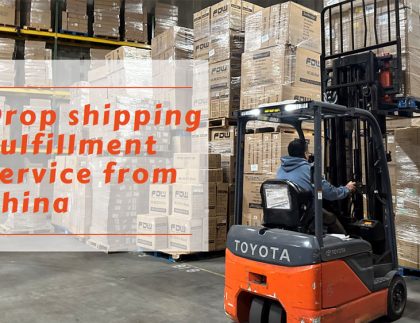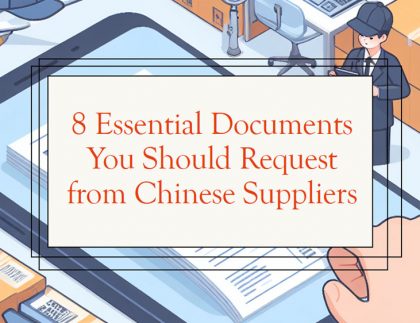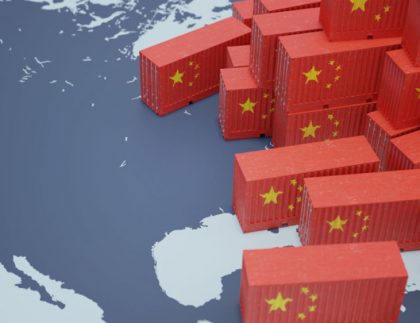6 Ways to Reduce International Shipping Cost for Your E-commerce
You aim to grow your global customer base while keeping shipping expenses in check. Here’s how to reduce international shipping costs.

International shipping can be a great way to expand your e-commerce business and reach new customers around the world. According to the latest statistics, global e-commerce revenue is projected to reach $8.1 trillion by 2026, and there are 32.7 million e-commerce stores globally, 39% in the U.S.
If you want to start or grow your own global e-commerce business, you need to know how to reduce your shipping costs, especially for international orders. Shipping costs can eat up a large portion of your profit margin and affect your customer satisfaction and loyalty.
In this blog post, I will share with you six ways to reduce international shipping cost for your e-commerce business. Let’s get started!
Table of Contents
Reduce Package Weight
Reduce package weight by using lighter materials and eliminating unnecessary items. The weight of your package is one of the main factors that affects your international shipping cost, as most carriers charge you based on the actual weight or the dimensional weight of your package, whichever is higher. To reduce package weight, try the following:
- Use lighter materials for your product or packaging, such as plastic instead of metal, or bubble wrap instead of foam;
- Use smaller boxes or envelopes that fit the product;
- Eliminate unnecessary items from your package, such as extra padding, inserts, or accessories that are not essential for your product.
Minimize the DIM Weight
DIM weight, or dimensional weight, is a pricing method used by shipping carriers to calculate the billing weight of a parcel instead of its actual weight. The carriers consider both the weight and dimensions of the package when calculating shipping fees, and the higher of the two is used to determine the shipping cost. This means that if a package is lightweight but takes up a lot of space, the carrier will charge based on the DIM weight rather than the actual weight, resulting in higher shipping costs.
By minimizing the DIM weight, businesses can save on international shipping fees. Here are some strategies to minimize DIM weight:
- Choose the correct box sizes;
- Optimize package contents;
- Utilize effective dunnage;
- Consider alternative packaging materials;
- Downsize your shipments.
Consolidate Your Shipments
Consolidating your shipments can save on international shipping fees by reducing transportation costs, handling fees, and warehousing expenses. Here is how:
Transportation cost reduction: When you consolidate multiple orders from different customers into a single shipment, you only need to move one large container instead of multiple smaller ones, resulting in lower transportation costs.
Handling and warehousing cost reduction: Consolidated shipments require fewer trucks or containers to be moved, leading to lower handling and warehousing costs.
DIM weight optimization: By combining multiple smaller packages into one larger shipment, you can potentially reduce the overall DIM weight and avoid higher shipping fees based on dimensional weight calculations.
Faster delivery: Consolidated shipments can expedite the delivery process as customers receive a single, consolidated package instead of waiting for multiple packages to arrive.
Easier management: Package consolidation can simplify the shipping process, making it easier to manage shipments and track packages throughout the delivery process
Consider Shipping Zones
Consider shipping zones by choosing the closest fulfillment location to your customer. Shipping zones are geographical areas that determine how much carriers charge you for international shipping based on the distance between the origin and destination of your package. The farther the distance, the higher the shipping cost.
To reduce the shipping cost, you can choose a fulfillment location that is closer to your customer, such as a local warehouse or a third-party fulfillment service. This way, you can reduce the transit time and distance of your shipment.
Choose the Right Shipping Mode
There are different shipping modes available for international shipping, such as ground, air, sea, or express, each with different advantages and disadvantages in terms of speed, cost, reliability, and environmental impact. You can compare different options and rates from different carriers and choose the one that best suits your needs and budget.
For example, if you are shipping lightweight and urgent items, you may choose air freight or express delivery. If you are shipping heavy and non-perishable items, you may choose sea freight or ground transportation.
When considering shipping methods, you may want to pay attention to the following factors:
Cost optimization
Different shipping modes have varying cost structures. Air freight is generally more expensive but offers faster transit times, while ocean freight is more economical for larger shipments. By considering the nature of your goods, budget, and desired delivery timeline, you can select the most cost-effective shipping mode.
Delivery time optimization
If your shipment is time-sensitive, air freight may be the best option due to its faster transit times. On the other hand, if delivery time is not a priority, ocean freight can be a more cost-effective choice for larger shipments.
Nature of the goods
The type of goods being shipped can also influence the choice of shipping mode. Air freight is suitable for time-sensitive and high-value goods, while ocean freight is better for heavy and bulky items. Considering the fragility, value, and weight of your products can help you determine the most appropriate shipping mode.
Reliability and safety
Each shipping mode has its own level of reliability and safety. Air freight is generally more reliable and offers better tracking capabilities, while ocean freight is more susceptible to delays but can handle larger volumes of goods. Assessing the importance of reliability and safety for your shipment can help you make the right choice of shipping mode.
Use a Fulfillment Service
A fulfillment service is a company that handles all aspects of your fulfillment process, such as storing, packing, shipping, tracking, and handling customer service for your orders. By using a fulfillment service, you can save money on international shipping costs by leveraging their expertise, technology, and network.
As a top 3pl company in China, DIDADI Logistics provides fulfilment service to global ecommerce brands. We can help you reduce package weight by using optimal materials and dimensions, consolidate your shipments by combining multiple orders into one package, consider shipping zones by choosing the closest fulfillment location to your customer, and choose the right shipping mode by comparing different options and rates.
Previous Post: 10 Common and Important Documents for International Shipping
Start your ship now!
- Improve your cross-border shipping
- Decrease expenses
- Accelerate deliveries









